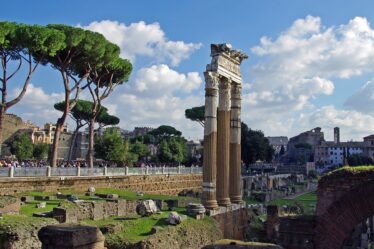

The Baptistery of San Giovanni in Florence is the setting for one of Dante Alighieri’s lesser-known life tales, which he himself describes in the 19th Canto of Inferno in The Divine Comedy. Dante, witnessing the punishment of the simoniacs—those guilty of selling ecclesiastical positions—who spend their sentence with their heads stuck in tight holes, alludes discreetly to this dramatic rescue story.
Dante mentions the Baptistery of San Giovanni in his account of the third bolgia of Hell. Priests utilized this octagonal baptismal font, which included a big central tank encircled by smaller basins, to baptize children. These smaller holes, called baciles, reminded me of the pits of Hell.
During Dante Alighieri’s time as prior, one of the most prestigious positions in Florence’s municipal government, a dramatic event occurred at the Baptistery of San Giovanni. According to historical accounts, a young boy—whose exact age and details remain unclear—fell into one of the baptismal font’s basins and became trapped, facing the risk of suffocation.
Acting quickly, Dante realized the boy was no longer breathing. In a desperate attempt to save his life, Dante broke off a piece of the marble from the baptismal font, successfully freeing the child and preventing a tragedy.
The Baptistery of Florence’s baptismal font was demolished in the sixteenth century, hence it is no longer in existence. The octagonal shape is all that’s left on the floor now. Nonetheless, historical sources indicate that it was strikingly similar to the 1226-old font that is still standing in Pistoia, which is thought to be the oldest in Tuscany following the destruction of Florence’s.
As for the child saved by Dante, some ancient commentators claimed his name was Antonio di Balbinaccio dei Cavicciuli, though the accuracy of this detail remains uncertain.



